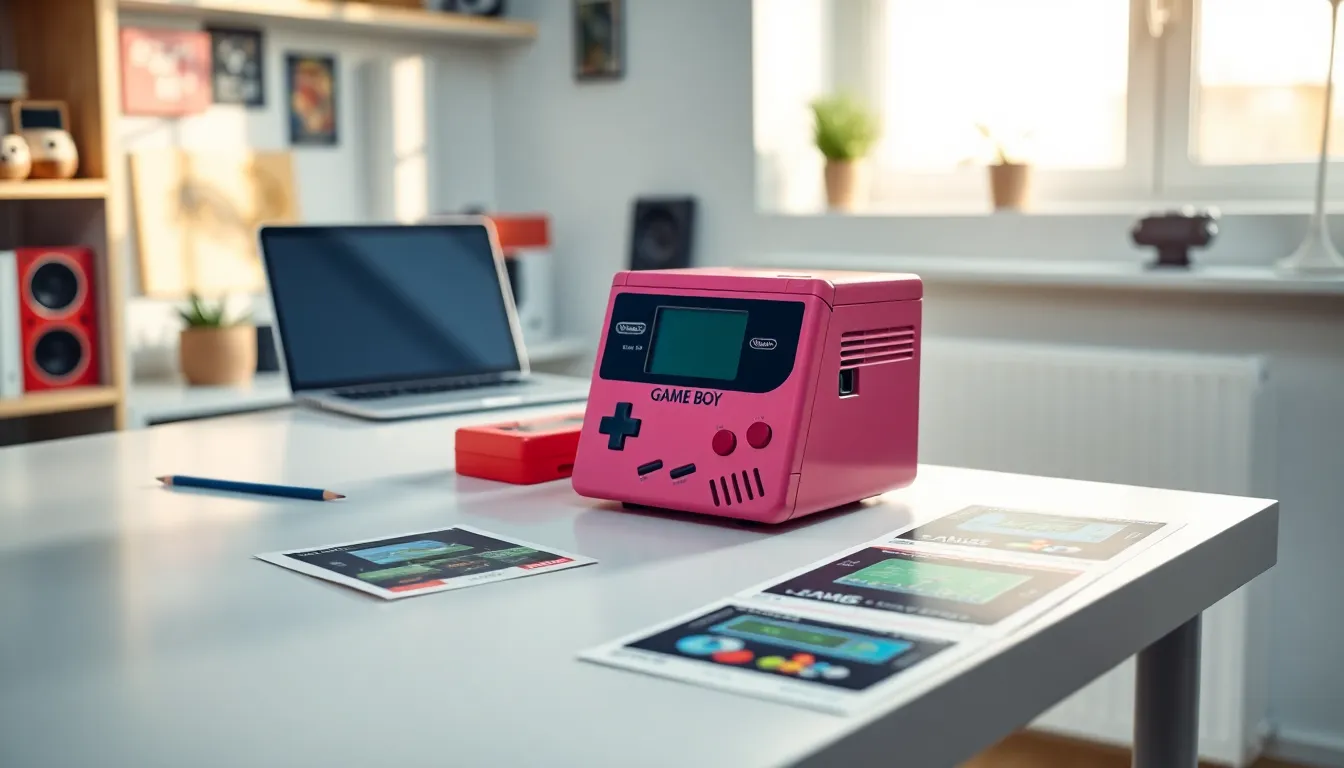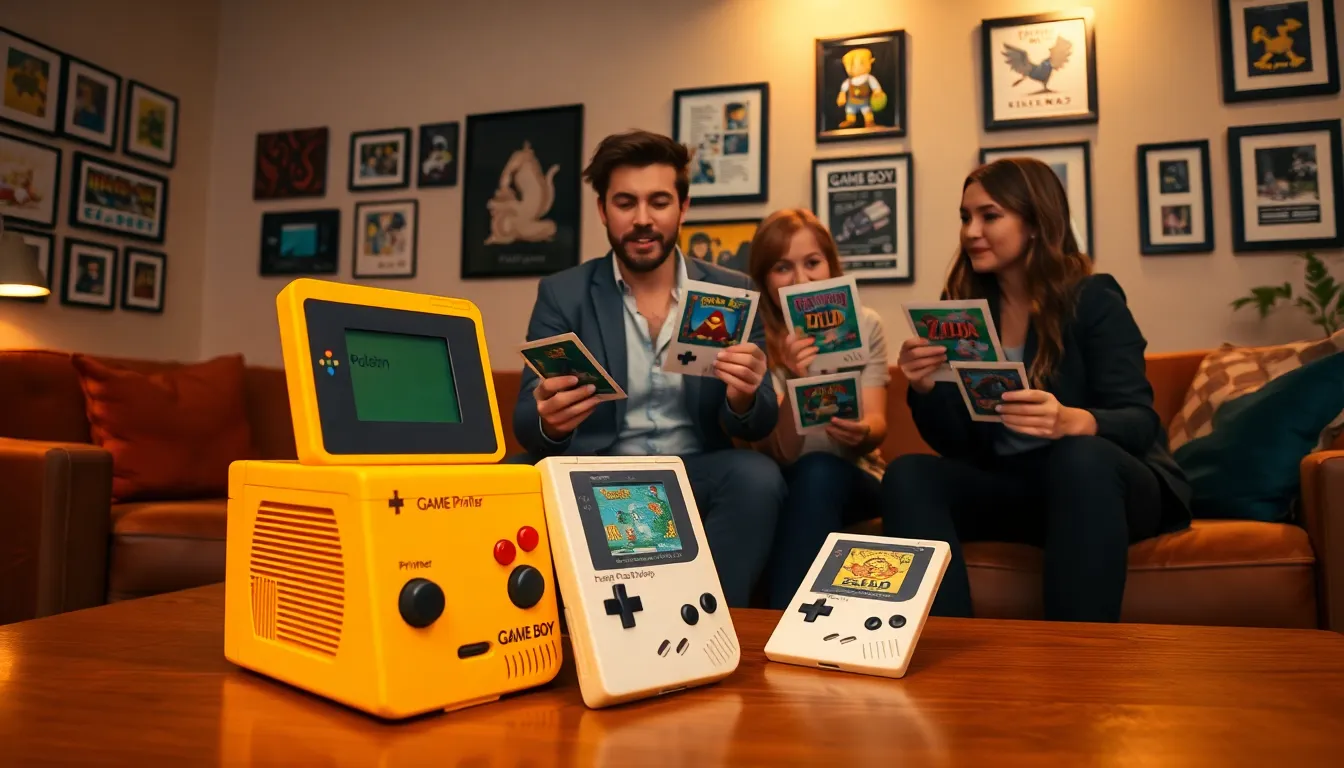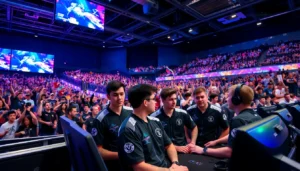Table of Contents
ToggleIn the world of gaming, nostalgia can be a powerful force, and few devices capture that spirit quite like the Game Boy Printer. Picture it: the year is 1998, and you’re navigating the pixelated adventures of your favorite Game Boy titles, only to discover you can bring those virtual moments to life on paper. Sounds magical, right? This quirky peripheral allowed players to print in-game images and share them with friends. He may have faded into the background of gaming history, but the Game Boy Printer’s charm remains undeniable. Join us as we plug in, press start, and dive deep into the intriguing realm of this retro device.
Overview of the Game Boy Printer

The Game Boy Printer was released in 1998 by Nintendo as a unique addition to the Game Boy ecosystem. Designed to complement the handheld console, this device allowed players to print screenshots or in-game graphics directly from their favorite titles. At that time, the idea of capturing and sharing gaming moments wasn’t as common as it is today, making the printer a novel experience. Its compact size and simple interface made it accessible, appealing to fans who enjoyed the tactile nature of printing physical copies of their digital worlds. Even though being a short-lived accessory, the Game Boy Printer remains a nostalgic symbol of a time when gaming peripherals aimed to enhance the overall experience instead of overshadowing it.
The Design and Features of the Game Boy Printer
Visually, the Game Boy Printer was charmingly retro, sporting a compact design that easily fit alongside the Game Boy itself. It featured a vibrant yellow casing, giving it a playful look that stood out on the shelf. The device measured just about 4″ x 2.5″ x 6″, making it portable enough for gamers on the go.
On the feature side, the printer employed thermal printing technology, which essentially meant it didn’t require ink cartridges. Instead, it utilized special thermal paper that reacted to heat, creating images that were surprisingly detailed for the time. Players could print at a resolution of 128 x 128 pixels, which translated to roughly the size of a business card. This meant that while images were small, they still captured the essence of game art magnificently.
The printer connected to the Game Boy via a Link Cable, making setup a breeze. By pressing just a few buttons, players could print in-game graphics from compatible titles. It was a delightfully low-tech solution that still managed to feel like a step forward in the gaming world, providing a sense of shared experience that many gamers longed for.
How the Game Boy Printer Works
Understanding how the Game Boy Printer works requires a brief look into its technology and design. Once powered on and connected via the Link Cable, players would navigate to a compatible game that supported printing functionality. Titles such as ‘Pokémon’ and ‘The Legend of Zelda: Link’s Awakening’ included options to print certain images or screenshots.
After selecting the desired image, players would simply press the print button, and the magic would begin. The printer used thermal printing, heating up selected sections of the thermal paper to produce a simple, yet effective, representation of the chosen image. The results could vary depending on the source material, but there was something undeniably satisfying about seeing a digital image transform into a tangible keepsake.
Besides, the printer didn’t just focus on images. It was also capable of printing personalized labels, allowing gamers to create fun tags for their collections or memorabilia. This added another layer to the device, showcasing Nintendo’s intent to provide gamers with a more interactive and creative gaming experience.
Games Compatible with the Game Boy Printer
Not every Game Boy title was compatible with the printer, but several classics supported this feature. One of the most iconic was ‘Pokémon’, where trainers could print their captured Pokémon for a tangible connection to their in-game adventures. The game allowed players to display their favorite Pokémon on their bedroom walls, adding a personal touch to their gaming experience.
Plus to ‘Pokémon’, ‘The Legend of Zelda: Link’s Awakening’ also included printing functionality. Gamers could immortalize their adventures in the land of Koholint Island, creating mini-posters of memorable moments or characters from the game. Other notable titles included ‘Game Boy Camera’, which was designed specifically for the printer. It allowed players to take photos and then print them, combining the worlds of photography and gaming in a novel way.
These games not only showcased the unique ability of the Game Boy Printer but also highlighted Nintendo’s creativity in utilizing existing technology to enhance gameplay.
The Impact of the Game Boy Printer on Gaming Culture
The Game Boy Printer played a surprisingly influential role in gaming culture even though its short lifespan. At a time when social media and digital sharing were non-existent, this device allowed players to share their in-game achievements and experiences physically. Gamers could exchange prints and show off their favorite moments, creating a sense of community.
Also, the Game Boy Printer contributed to a broader trend in gaming, merchandising. The rise of the printing accessory anticipated future developments in gaming culture, where tangible collectibles, merchandise, and interactive experiences became commonplace. The concept of merging physical prints with digital gameplay laid the groundwork for later innovations in gaming peripherals.
Also, the printer evoked creativity among players. This wasn’t just about printing: it inspired fans to think more innovatively about how they could interact with their favorite games. Engaging with a game beyond the screen had a profound effect on the player base, making their immersive worlds feel a little more real.
Collectibility and Market Value of the Game Boy Printer
Today, the Game Boy Printer is often regarded as a piece of vintage gaming memorabilia. Collectors seek out this whimsical device for its rarity and historical significance. Since production was limited and many units have been discarded over the years, finding a functioning Game Boy Printer can be a challenge. Prices for unused models can reach upwards of $100, depending on condition, rarity, and included accessories.
Online marketplaces and auction sites like eBay often feature listings for the printer, where buyers can compete for these nostalgic treasures. But, prices vary widely, with some listings far exceeding market value, thanks to the printer’s unique status in gaming history.
Aside from the printer itself, original thermal paper and printing accessories have also become highly sought after, with collectors eager to find this nostalgic combination. As the digital age progresses, many find joy in collecting these relics from their gaming past, celebrating the rich history of gaming itself.




